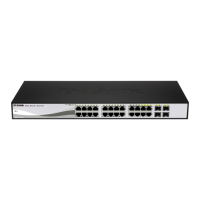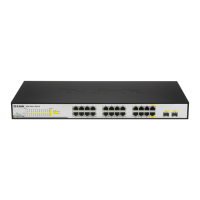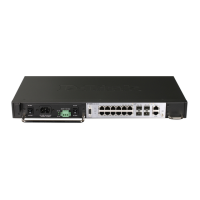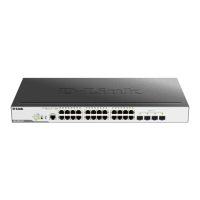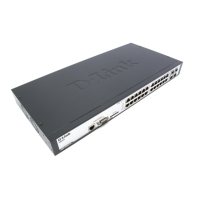4 Web-based Switch Configuration D-Link Smart Managed Switch User Manual
38
Figure 4.30 – System > DNS Resolver > DNS Resolver Dynamic Name Server Table
This page contains the dynamic DNS name server information.
System > DNS Resolver > DNS Resolver Static Host Name Settings
Static Host Name table contains the DNS entries that manually configured by user. The system supports up
to 16 static entries.
Figure 4.31 – System > DNS Resolver > DNS Resolver Static Host Name Settings
Host Name: Specify the Domain name string in the field.
IP Address: Specify the IP address in the field.
System > DNS Resolver > DNS Resolver Dynamic Host Name Table
DNS Resolver Dynamic Host Name Table contains the DNS entries learned dynamically. The table supports
up to 10 entries.
Figure 4.32 – System > DHCP Relay > DHCP Relay Global Settings
This page contains the entries of DNS dynamic hosts.
System > DHCP Auto Configuration
This page allows you to enable the DHCP Auto Configuration feature on the Switch. When enabled, the
Switch becomes a DHCP client and gets the configuration file from a TFTP server automatically on next boot
up. To accomplish this, the DHCP server must deliver the TFTP server IP address and configuration file
name information in the DHCP reply packet. The TFTP server must be up and running and store the
necessary configuration file in its base directory when the request is received from the Switch.
Figure 4.33 – System > DHCP Auto Configuration

